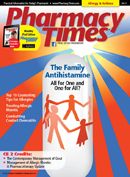Barriers to Medication Reconciliation
Community pharmacists and emergency departments can improve patient safety by communicating effectively to ensure that patient's medication profiles are accurate and up-to-date.
Community pharmacists and emergency departments can improve patient safety by communication effectively to ensure that patient's medication profiles are accurate and up to date.
Medication reconciliation is a process that aims to improve patient safety and reduce the risk of medication error by ensuring that health care providers and patients have an up-to-date list of the medications a patient is taking. One important aspect of medication reconciliation’s success depends upon emergency department (ED) and other hospital personnel accessing the patient’s most up-to-date medication history from the outpatient setting. To do this, effective communication between community pharmacies and EDs is critical.

The Institute for Safe Medication Practices (ISMP), through a grant from the Aetna Foundation, conducted a survey of community pharmacies and EDs in a large metropolitan area to assess the awareness of medication reconciliation, determine the degree of communication between community pharmacies and EDs, and identify barriers that prevent both from conducting medication reconciliation. 1 ISMP developed 2 surveys, 1 for community pharmacies and 1 for EDs, seeking to answer these questions.
The ED survey was completed by 13 hospital EDs. Eighty pharmacies, including independent, mass merchandiser, supermarket, and chain pharmacies, submitted responses for the community pharmacy survey. Although the response rates (19% for EDs and 42% for community pharmacies) were limited and the community pharmacy responses were skewed toward larger chain pharmacies, there is important information that can be gleaned from these results. In both settings, the majority of patients do not present a current list of their medications. To address this, hospitals and community pharmacies must educate patients about the importance of having an up-to-date list of their medications when interfacing with any part of the health care system. It should be a priority. Also, professionals in all health care settings must make a greater effort to provide a current list of medications to patients at each encounter.
Another survey finding was that communication between EDs and community pharmacies for the purpose of medication reconciliation was infrequent. One potential contributing factor may be that, compared with hospital EDs, community pharmacies are not typically open 24 hours. As a result, an ED practitioner may not be able to reach the patient’s community pharmacist at night. However, if a patient purchases their medication at a chain pharmacy, a health care practitioner in the ED can call any 24-hour store in that chain, even if it is located in another state, to access current medication information.
Another factor limiting the effectiveness of medication reconciliation could be that patients receive their medications from several pharmacies (eg, community, mail service), which adds complexity. This calls for a common shared database of patient medication and medical history to be available to health care practitioners. All of the EDs that responded to the survey indicated personnel do not perceive the Health Insurance Portability and Accountability Act (HIPAA) as a barrier to sharing information regarding a patient’s medications with a community pharmacy. However, some EDs did report unwillingness on the part of the community pharmacies to share patient information due to perceived HIPAA violations.
Interestingly, obtaining correct and complete information on a patient’s medication regimen was reported as a barrier, yet neither group cited major difficulties when direct communication between EDs and community pharmacies took place. This suggests that EDs and community pharmacies are able to communicate, but that complete patient medication information is not readily available to either of them. The establishment of a common database that, as mentioned above, can be shared among all health care providers is surely needed.
It is clear that a number of barriers make it difficult and inefficient to access and share complete medication information across the health care system. More effort is needed to provide EDs, community pharmacies, and patients with the necessary tools and resources to implement and maintain effective medication reconciliation processes. PT
Dr. Gaunt is a medication safety analyst and the editor of ISMP Medication Safety Alert! Community/ Ambulatory Care Edition.
Subscribe to Newsletter
Pharmacy Times and the Institute for Safe Medication Practices (ISMP) would like to make community pharmacy practitioners aware of a publication that is available. The ISMP Medication Safety Alert! Community/ Ambulatory Care Edition is a monthly compilation of medication-related incidents, error-prevention recommendations, news, and editorial content designed to inform and alert community pharmacy practitioners to potentially hazardous situations that may affect patient safety. Individual subscription price is $52 per year for 12 monthly issues. Discounts are available for organizations with multiple pharmacy sites. This newsletter is delivered electronically.
For more information, send an e-mail message to community@ismp.org, or contact ISMP at 215-947-7797.

